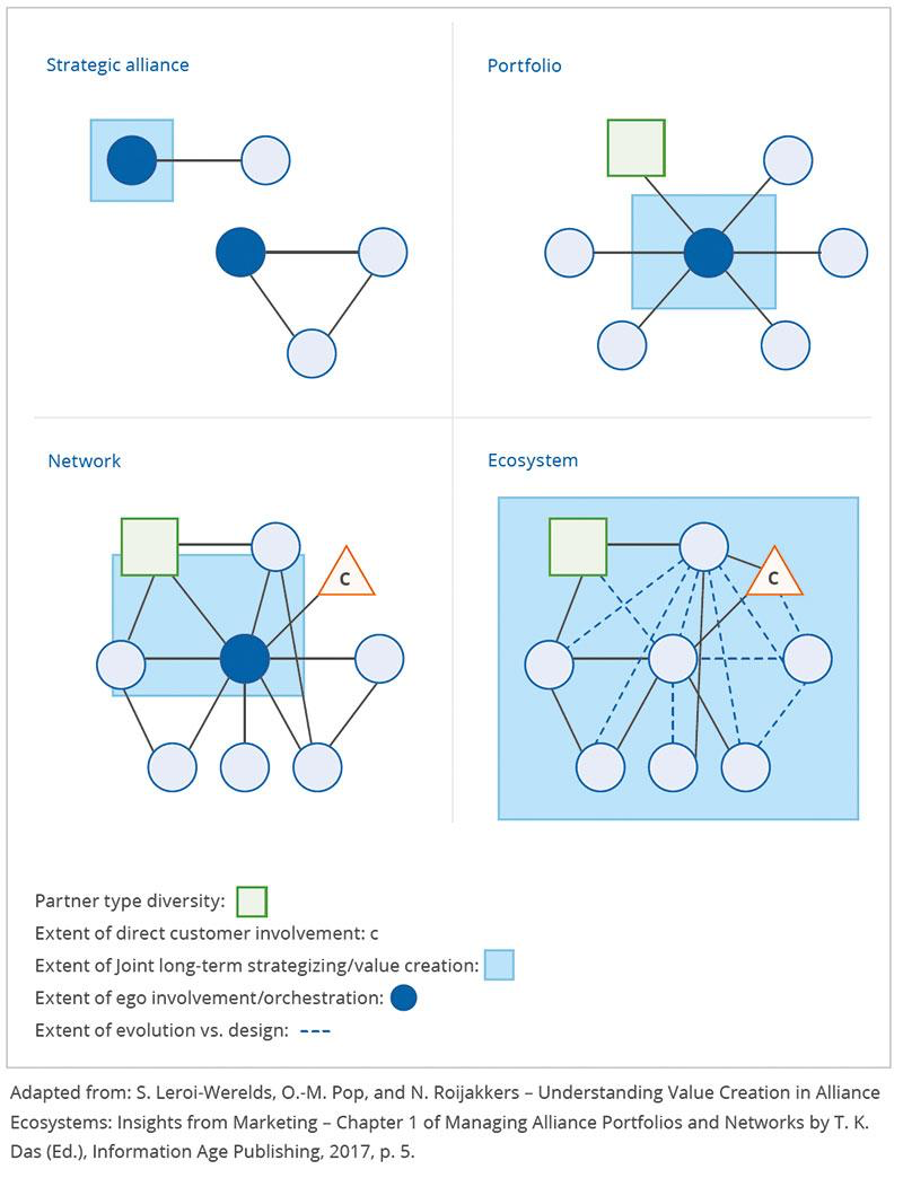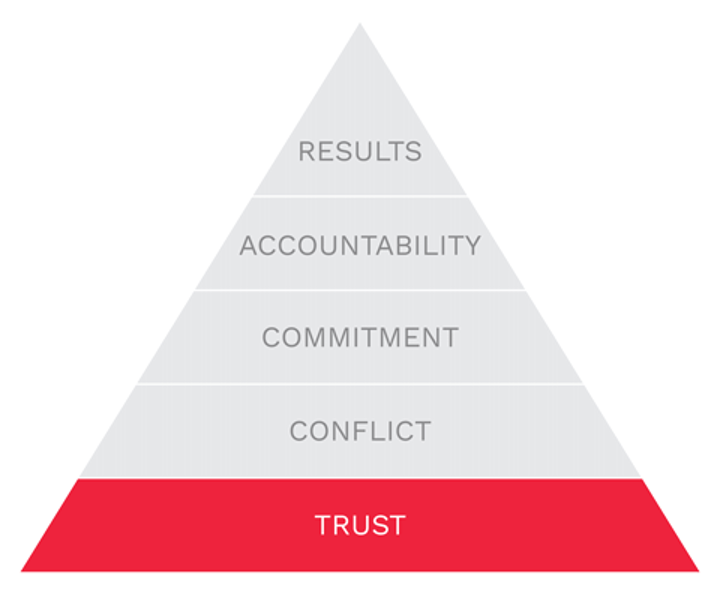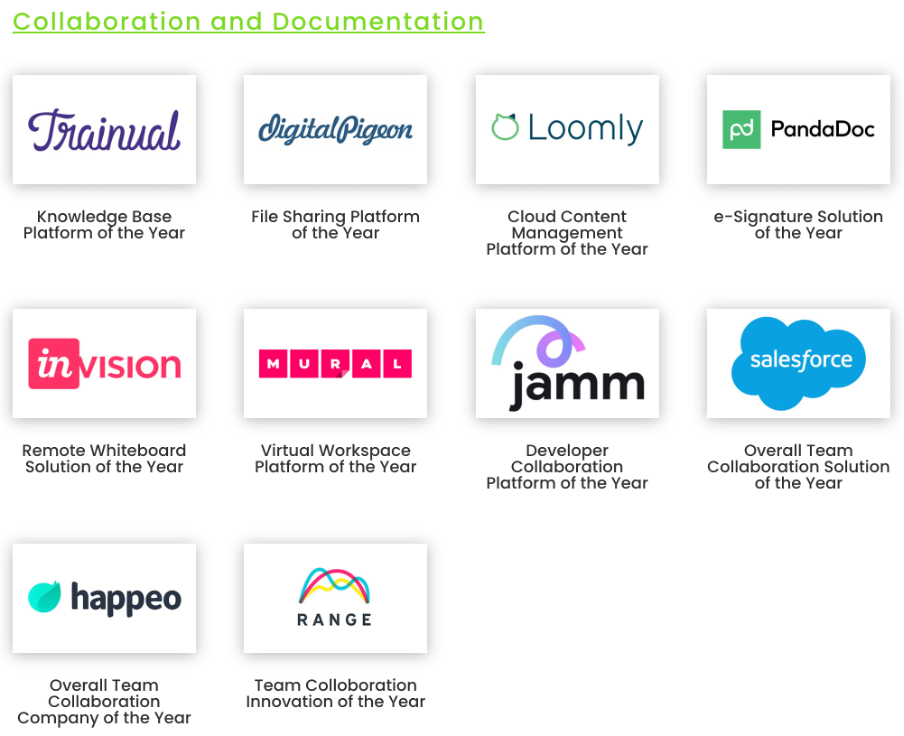Team Collaboration FAQ
The workplace, as we once knew it, is changing. Accelerated by the coronavirus pandemic, more and more people are working remotely in distributed teams.
Now, more than ever, teams need to collaborate.
But what are the most common barriers to team collaboration? And how do you build a strong team?
In this team collaboration FAQ, the Loomly Team answers all your questions.
Table of contents
- What is team collaboration?
- What is the purpose of collaboration?
- What are the key elements of collaboration?
- How many types of collaboration are there?
- How can collaboration improve productivity?
- What is effective teamwork?
- What are 3 important skills for teamwork and collaboration?
- What are the 5 principles of effective team collaboration?
- How do you collaborate with a team?
- Why is collaboration important in a team?
- Why is collaboration important in leadership?
- What are the benefits of teamwork?
- What is good team collaboration?
- How do you motivate your team to collaborate?
- Why does collaboration fail?
- What are the 6 collaborative behaviors?
- What are the 5 behaviors of a cohesive team?
- What are the most common barriers to team collaboration?
- How do you build a strong team?
- How to create a collaborative culture?
- What are the best books about team collaboration?
- What are the advantages of using online collaborative tools?
- What are the best collaborative tools?
What is team collaboration?
Team collaboration is a communication and project management approach that emphasizes teamwork, original thinking, and equal participation to achieve objectives.
What is the purpose of collaboration?
Collaboration enables individuals to work together to achieve a defined and common business purpose. It exists in two forms:
- Synchronous where everyone interacts in real-time, for example, through online meetings or instant messaging.
- Asynchronous where the interaction is not time-bound, such as uploading documents or making annotations to shared workspaces.
What are the key elements of collaboration?
The 7 essential elements of collaboration are:
- Cooperation
- Assertiveness
- Autonomy
- Responsibility/Accountability
- Communication
- Coordination
- Mutual Trust and Respect
How many types of collaboration are there?
There are 4 main types of collaboration:
- Alliances – Strategic alliances are agreements between two or more independent firms, which temporarily combine resources and efforts to reach their strategic goals.
- Portfolios – Having understood the benefits of creating alliances, firms were now interested in extending them. As such, alliances were centrally managed, and the practice of building portfolios gained ground.
- Innovation Networks – Networks include groups of firms that share R&D goals related to products, services, processes, or business models. For example, KLM and Northwest Airlines (now Delta) initiated in 1989, and The Human Genome Project, an initiative that made waves in 1990 with its first published study/article.
- Ecosystems – The most advanced type of collaboration for innovation is the ecosystem. First shared by authors Marc Kramer and Mark Pfitzer in their 2016 HBR article called “The Ecosystem of Co-created Value.” Examples include: Salesforce – client relationship management systems, IMEC – nanoelectronics, Korean Air – air travel, and ENEL – electricity and gas distribution

How can collaboration improve productivity?
The use of collaboration technologies can help organizations of any size improve productivity. For example, an ICP survey found companies that used Slack reported an average:
- 49% reduction in emails.
- 25% fewer meetings.
- 32% increase in productivity.
Here are some of the ways collaboration can improve productivity:
- Break down silos by allowing team members to communicate with each other across departments.
- Improve the customer experience by connecting customers with the right team member straight away rather than passing them around.
- Improve external collaboration and communications with vendors/suppliers.
- Enable real-time information exchange – e.g. data syncing, file sharing – to facilitate business processes.
- Streamline workflows by improving cross-functional team communication – e.g. manufacturing, sales, marketing, procurement, IT – and responding to market demand cost-efficiently.
- Facilitate project management by increasing transparency and visibility, maintaining an open line of communication, and ensuring everything is on track to avoid costly mistakes and confusion.
- Share information on policy, programs, promotions, scheduling, budgets, etc. to minimize the time employees spend on administrative tasks.
- Enable knowledge workers to gain real-time access to and locate data quickly and accurately with a content management system.
- Facilitate the execution of projects and initiatives by making sure information can be shared quickly and concisely.
- Promote team problem-solving, especially for remote workers, by allowing employees to meet, discuss, and make decisions with agility and accuracy.
- Eliminate version-control issues, which can lead to delays, errors, and inefficiencies, with real-time file sharing.
- Encourage innovation by reducing the time from ideation to implementation and tapping into talents throughout the organization.
What is effective teamwork?
According to research published in the Harvard Business Review, effective teamwork in the workplace happens if people consider themselves similar. The greater the diversity of background and experience, the less likely team members will share knowledge or show collaborative behaviors.
However, while it’s proven that similar people work well together, as work tasks continue to get more complex, people with diverse expertise and background are forced to collaborate.
What are 3 important skills for teamwork and collaboration?
Collaboration and teamwork require a mix of interpersonal, problem solving, and communication skills to work together towards a common goal.
According to Fingerprint For Success: 86% of employees believe workplace failures are due to a lack of collaboration or ineffective communication. Here are the skills you can use to enhance teamwork and collaboration in the workplace.
3 important skills for teamwork and collaboration:
- Trust
- Tolerance
- Self-awareness
4 more important skills for teamwork and collaboration:
- Empathy
- Transparency
- Active listening
- Conflict resolution
What are the 5 principles of effective team collaboration?
The 5 principles of effective team collaboration are:
- Applying Trust
- Respect
- Willingness
- Empowerment
- Effective Communication
How do you collaborate with a team?
Here are the top 5 ways to collaborate with a team most effectively:
- Get everyone on the same page – explain the project goals and roles.
- Set expectations – let everyone know when and what they have to do.
- Use tech tools – enable collaborative working with tools like Google docs and shared calendars.
- Be open about everything – everyone needs to be transparent and share what’s working and what’s holding them up.
- Hold effective team meetings – set an agenda and stick to it.
Why is collaboration important in a team?
Here are 4 reasons why collaboration is important in a team:
- It promotes self-analysis: Collaboration challenges people to think, articulate, and receive clarity about their competencies.
- It results in problem-solving: Collaboration creates a larger talent pool that is more competent, able, and experienced.
- It makes you look at the bigger picture: Collaboration leverages different skills and backgrounds to complement each other.
It teaches: Collaboration pushes your teams to learn new things from each other.
Why is collaboration important in leadership?
The ever-changing pace of the business world means organizations are moving towards a more collaborative, innovative, and team-based way of operating. As a result, leaders need to take a more open approach where each team member engages and contributes to the overall success.
Collaborative leadership is essentially the enhanced relationship between managers and employees as they cooperate to accomplish a shared goal.
Leaders have to work with people from other teams, branches, or another department to ensure workflows and ideas are aligned.
What are the benefits of teamwork?
The benefits of teamwork are that it:
- Fosters creativity and learning – teamwork maximizes shared knowledge in the workplace and helps you learn new skills.
- Blends complementary strengths – teamwork lets employees build on the talents of their teammates.
- Builds trust – relying on other people builds trust and establishes healthy relationships with coworkers.
- Teaches conflict resolution skills – employees are forced to resolve the teamwork conflicts that arise themselves instead of turning to management.
- Promotes a wider sense of ownership – teamwork allows people to engage with the company and add to the bigger picture.
- Encourages healthy risk-taking – teamwork allows members to take more risks, as they have the support of the entire group to fall back on in case of failure.
Some of the most powerful benefits of teamwork you can expect for your marketing department are:
- Better ideas
- Higher morale
- More productivity
- Reduced stress
- Higher quality work
What is good team collaboration?
Good team collaboration relies on open and truthful communication. The more people feel they can contribute, the more ideas can be shared, the more productive the team will become. However, for the more introverted team members, this part of the process might not come naturally.
How do you motivate your team to collaborate?
You can motivate your team to collaborate by:
- Providing challenging tasks with a clear outcome.
- Offering experiential feedback on performance.
- Giving team members ownership of their tasks, solutions, and goals.
- Setting clear and demanding goals (instead of vague and easy ones).
- Creating a psychologically safe environment with a healthy level of conflict.
Why does collaboration fail?
Here are 4 reasons why collaboration fails:
- Poor relationships – You don’t have to be best friends to collaborate well, but you do need to have mutual respect and be able to communicate.
- Lack of clarity – You need to ensure everyone’s individual goals align with the team’s overall objective: set roles, give ownership, and establish workflows.
- Tech overload – You need to use one project management or collaboration tool, and ensure everyone knows how to use it.
- Lack of visibility – You need to know individual capacity, workload, activities, time spent on tasks, and availability.
What are the 6 collaborative behaviors?
Here are the 6 crucial collaborative leadership behaviors:
- Silo “busting” – Set unifying goals and promote a reward structure that emphasizes cooperation and collective success.
- Building trust – A collaborative team is a group of people working together who trust each other.
- Aligning body language – The “warmer side” of nonverbal communication is central to creating the most collaborative workforce relationships.
- Promoting diversity – Teams with varying levels of skills and knowledge perform best.
- Sharpening “soft” skills – The ability to listen and respond empathetically gives you a genuine professional advantage.
- Creating “psychological safety” – People are a learning, teaching, knowledge-sharing species that feel secure, valued, and trusted in a psychologically safe workplace environment.
What are the 5 behaviors of a cohesive team?
The 5 behaviors of a cohesive team are:
- Trust: Without trust in the team, very little progress can be made in gaining cohesiveness overall.
- Conflict: Sometimes considered dangerous on a team because it can lead to hard feelings. But if trust is truly in place, conflict is constructive.
- Commitment: Gaining commitment from team members is not the same as getting consensus. Commitment comes with clarity of purpose.
- Accountability: Typically, the most difficult behavior for a team to master.
- Results: Achieving team objectives is why the team exists.
Each behavior in the model builds upon the previous and supports the others.

What are the most common barriers to team collaboration?
Some of the most common organizational, cultural, and interpersonal barriers to collaboration include the following:
- A lack of respect and trust
- Different mindsets
- Poor listening skills
- Knowledge deficits
- A lack of alignment around goals
- Internal competitiveness
- Information hoarding
- Organizational silos
- Physical separation
How do you build a strong team?
Here’s how to build a strong team for your company:
- Focus on roles. Investing your time and money in people who truly specialize in the role your company needs will have immense payoffs later.
- Value each role. Treating each role as an essential part of your operation is also crucial. Each team member should feel like their role matters.
- Communicate. The best way to demonstrate value between team members is through communication. Apps like Slack help your team members to share and create a more productive workflow.
- Set goals. Setting short and long-term (realistic) goals with your team also become the foundation for every task they set out to complete each day.
- Celebrate successes and failures. Celebrating your accomplishments and milestones also brings your team together and allows everyone to see that great things can happen when they work together. In contrast, if your team fails at something, come together to redirect your efforts or turn it into something positive.
- Know each other. Getting to know the people you work with helps you understand their work style and how to have constructive discussions with them on tough days.
How do you create a collaborative culture?
High-performing teams respond best to a workplace that offers them the best tools to work with, meaningful connections, a culture of collaboration, and leaders who are transparent and value teamwork.
Here’s how to create a collaborative culture:
- Invest in tech that brings teams together.
- Make collaboration a priority.
- Help team members build bonds.
- Make room for remote team members.
- Give good feedback often.
What are the best books about team collaboration?
Here’s our roundup of the best books on collaboration, teamwork, and management:
1. Who — Geoff Smart & Randy Street
Topic: Hiring
2. The 5 Dysfunctions Of A Team — Patrick Lencioni
Topic: Teamwork, Leadership
3. Overcoming The 5 Dysfunctions Of A Team — Patrick Lencioni
Topic: Teamwork, Leadership
4. High Output Management — Andrew S. Grove
Topics: Management, Teamwork
5. The Manager’s Path — Camille Fournier
Topic: Management
6. Compassionate Management — Rena DeLevie
Topic: Management
7. Herding Tigers: Be The Leader Creative People Need — Todd Henry
Topic: Management, Collaboration
8. Creativity, Inc. — Ed Catmull
Topic: Management, Teamwork, Collaboration
9. Rework — Jason Fried & David Heinemeier Hansson
Topics: Remote Work, Teamwork
10. Remote: Office Not Required — Jason Fried & David Heinemeier Hansson
Topics: Remote Work, Remote Worker Management, Collaboration
11. HBR’s 10 Must Reads On Collaboration — Various Authors
Topic: Collaboration, Management, Leadership
12. 100 Tricks To Appear Smart In Meetings — Sarah Cooper
Topic: Hilarious Relatable Satire, Meetings
What are the advantages of using online collaboration tools?
Here are 6 advantages of using online collaboration tools:
1. Productivity
Online collaboration tools allow team members to work with others from any location, including home and traveling. This drastically reduces ”downtime” and allows people to be productive when it best suits them.
2. Efficiency
Online collaboration tools can eliminate wasted time searching for information and/or writing emails. With all communications in one secure online platform, it’s simple for team members to log in and find the information they need to do their job.
3. Cost
Online collaboration is highly cost-effective compared to traditional methods. Also, because collaborating online allows employees to work from home or other locations, you can potentially cut the cost of office overheads such as equipment, electricity, and office space.
4. Audience
Online collaboration tools let you reach further than the ”usual suspects” within your organization and start working closer with external stakeholders, such as your key clients, partners, and suppliers. This brings diversity to your collaboration – resulting in more creativity and the creation of stronger relationships.
5. Security
The most trusted online collaboration platforms have many safeguards in place to protect their users’ data. Encryptions, password protection, two-step authentication, and firewalls give users the peace of mind knowing their sensitive data is secure and safe.
6. Project Management
Online collaboration platforms keep all project materials and communications with external parties within the same workspace. With a full audit trail of every person’s interaction with the workspace, combined with team calendars and task lists, managing any size project with users across multiple organizations becomes much more straightforward, quicker, and cost-effective.
What are the best collaboration tools?
There are plenty of collaboration tools to choose from depending on your requirements. Here are a few selections and award winners.
Remote Tech Breakthrough Awards 2020
Collaboration and Documentation

- Trainual – Knowledge Base Platform of the Year
- Digital Pidgeon – File Sharing Platform of the Year
- Loomly – Cloud Content Management Platform of the Year
- PandaDoc – e-Signature Solution of the Year
- InVision – Remote Whiteboard Solution of the Year
- Mural – Virtual Workspace Platform of the Year
- Jamm – Developer Collaboration Platform of the Year
- Salesforce – Overall Team Collaboration Solution of the Year
- Happeo – Overall Team Collaboration Company of the Year
- Range – Team Collaboration Innovation of the Year
Techradar: Best Online Collaboration Tools
- Office 365 – Share and edit documents, plus messaging.
- Slack – Communicate with your team.
- Asana – Manage your team’s projects.
- Trello – Organize projects and work on them with colleagues.
- Podio – Organize large stacks of work and delegate tasks.
- Ryver – An easy-to-use communication tool (like Slack).
- Flock – A communication-focused Slack alternative.
Workable: The 15 Best Collaboration Tools for Productive Teams
Communicate with your team
Instant messaging and video conferencing tools:
Manage projects and tasks
Coordinate projects, tasks, and objectives effectively:
Create together
Sometimes team members need to create together:

Manage all your social media accounts in one place.
Craft, schedule, & auto-post content to all your social channels, then track analytics and manage interactions from a single, easy-to-use dashboard.
Team Collaboration in a Nutshell
The ever-changing pace of the business world means organizations are moving towards a more collaborative, innovative, and team-based way of operating.
Follow the tips in this guide to lead or work with your team collaboratively, and achieve tremendous success.



